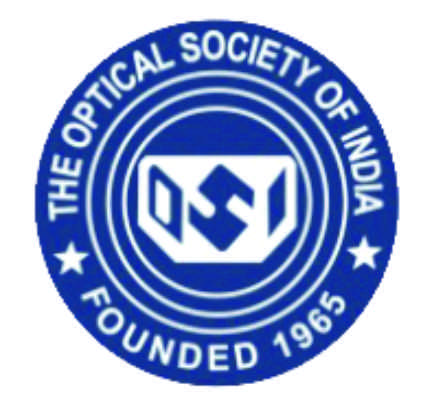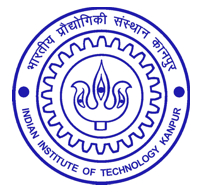 |
XLII ANNUAL MEETING OF THE OPTICAL SOCIETY OF INDIA
OSI - International Symposium on Optics (OSI-ISO 2018) 19 - 22 September 2018 INDIAN INSTITUTE OF TECHNOLOGY KANPUR |
 |
 |
XLII ANNUAL MEETING OF THE OPTICAL SOCIETY OF INDIA
OSI - International Symposium on Optics (OSI-ISO 2018) 19 - 22 September 2018 INDIAN INSTITUTE OF TECHNOLOGY KANPUR |
 |
Several tutorial courses are being held. The intent of the tutorial sessions is to introduce a topic of current interest to graduate students by experts in the field. The students are encouraged to interact with the session convenors even before coming here to get properly prepared for the tutorial and extract maximum from the tutorials.
Some of the sessions will be in the forenoon and some in the afternoon. Students can register for two tutorials by choosing one in the forenoon and one in the afternoon. Students who credit and attend the courses will get certificates for the same.
| TUTORIAL COURSE | INSTRUCTORS | SESSION |
| Classical and Quantum aspects of the Angular Momentum of Light |
Prof. Senthilkumaran, IIT Delhi Prof. R.P. Singh, Physical Research Laboratory, Ahmedabad Prof. Nirmal K. Viswanathan, University of Hyderabad |
Forenoon |
| Metamaterials and Terahertz Technologies |
Prof. Ranjan Singh (NTU, Singapore) Prof. Dibakar Roy Chowdhury (Ecole Mahindra, Hyderabad) Prof. S. anantha Ramakrishna (IIT Kanpur) |
Forenoon |
| Introduction to Optical Microscopy: From basics to super-resolution |
Prof. Joby Joseph (IIT Delhi) Prof. Harshwardhan Wanare (IIT Kanpur) Prof. G. Rajshekhar (IIT Kanpur) |
Forenoon |
| Current and future trends in Plasmonics: Basics and applications |
Prof. Achanta Venu Gopal (TIFR, Mumbai) Prof. Rajan Jha (IIT Bhubaneswar) |
Afternoon |
| Micro- and Nano-fabrication |
Dr. Ganapathi Subramania (Sandia National Laboratories, Albuquerque) Prof. J. Ramkumar (IIT Kanpur) |
Afternoon |
| Cavity Quantum Opto-mechanics |
Prof. Amarendra Sarma (IIT Guwahati) Prof. Sankalpa Ghosh (IIT Delhi) Prof. Aranyabhuti Bhattacherjee (BITS Pilani, Hyderabad) |
Afternoon |
In addition to the spin angular momentum (SAM), corresponding to right- or left- circular polarization, a beam of light can also carry orbital angular momentum (OAM). Light beams with OAM have a helical phase structure due to azimuthal dependence of the form exp(i ℓ φ), where ℓ is the quantum number characterizing the projection of the OAM on the light propagation direction and φ the azimuthal angle. For , the light intensity on the axis of the beam has to be zero, due to phase singularity in the scalar domain which, in the vector domain need not be zero, leading to the realization of more fundamental polarization singularities. The observation that laser beams could be engineered to carry well-defined quantity of OAM rapidly found wide range of applications in imaging, microscopy, spin-orbit effects, quantum information, free-space and guided optical communication, nonlinear optics and structured matter waves which are lively and fast-growing areas of research. The tutorial speakers are pursuing different aspects of the angular momentum of light and will be delivering lectures, one hour each, on the classical and quantum aspects of OAM and the spin-orbit interaction (SOI) of light, an area of research seen to bridge the two ‘distinct ’ realms of physics. The lectures will be designed to enthuse and initiate young researchers into this emerging area of research and satisfy and challenge curious researchers.
Phase and polarization singularities (PSK):
The theory of singularity is ubiquitous in various fields of science and engineering. Starting from the field structure and various topological aspects of such beams, their unique properties are discussed. These properties give rise to wide variety of applications- one of them being due to the orbital angular momentum of light. This orbital angular momentum arising due to phase structure of the beam can also be achieved through other wave optical engineering techniques that spatially control the amplitude and polarization of beams. Also, the role of orbital angular momentum in shaping beams in scalar and vector optics is presented. The effect of switching and swapping spin and angular momentum states in beams and the consequences are discussed.
Orbital angular momentum entangled photons (RPS)
Polarization entangled photons are well known and being used extensively for quantum communication and other quantum information tasks. Starting with spontaneous parametric down conversion process (SPDC) to produce entangled photons in different degrees of freedom, the tutorial, mainly focusing on experimental techniques, will discuss how one can generate OAM entangled photons and how they can be used along with polarization entangled photons to improve the efficiency of quantum tasks at hand.
Spin-orbit interaction of light (NKV)
The collective and significant role played by the amplitude, phase and polarization of an electromagnetic wave in enriching the fundamental understanding of light field and quanta (photons), is not more evident than in the spin-orbit interaction (SOI) of light – a study of the mutual influence of the SAM and the intrinsic and extrinsic OAM of light. The concept of SOI of light first proposed and demonstrated by Zel′dovich et al., continues to be a research topic of significant importance. Broadly, the tutorial will cover fundamental and applied aspects of SOI effect resulting in the spin-dependent redistribution of light intensity due to space- and wavevector-variant geometric phase. In systems with rotational symmetry, the SOI leads to spin-to-orbital angular momentum conversion (SOC) and the generation of optical vortex beams; breaking of which results in the spin-Hall Effect of light (SHEL), a spin-dependent redistribution of light intensity in the transverse plane.
Fundamentals of Infra-red and THz metamaterials
Fundamentals of THz metamaterials: Active and passive near field coupling schemes (DRB)
Dynamic materials for active THz metamaterials: Dielectrics, graphene,
and superconductors (RS)
(1) Concepts of Fourier Optics:
Diffraction, Angular spectrum, 4F system, Resolution, point spread
function, coherent and incoherent illumination, spatial frequency
response of imaging systems, sampling of images on digital sensors.
(2) Physics of microscopy modalities:
Bright-field, dark-field, phase contrast, fluorescence, confocal,
quantitative phase, super-resolution (Fourier ptychography, SIM, STED,
STORM).
(3) Image reconstruction algorithms and related ideas:
Fourier based and iterative methods for denoising and deconvolution of
microscopy images, phase reconstruction and unwrapping, reconstruction
methods for super-resolution microscopy, combining microscopy with
machine learning.
Plasmonics deals with the science and application of interaction between electromagnetic field and free electrons in a metal resulting in charge density wave excitation at the metal-dielectric interface. The dispersion of these polaritonic resonances is of interest as they lead to enhancement of local field. SPs are the quanta of coherent oscillating electromagnetic wave, generated at the metal-dielectric interface. Ohmic loss and electron-core interactions lead to loss in plasmon coherence. For optical excitation of surface plasmons (SPs), proper design of metal patterns as well as special excitation schemes are needed. For example, excitation schemes like prism, optical waveguide, grating are employed to directly excite SPs with light. Metamaterials or designed metal-dielectric structures offer uniquely designed properties. SPs can be applied for various applications such as sensing, material characterization, analysis of molecular behavior, chemical kinetics etc. Apart from the propagating plasmons mentioned above, there are other types of plasmon modes such as localized plasmon (confined within metallic nanostructures, having the size comparable to the wavelength of light), Tamm Plasmon (possible electromagnetic states at the interface of a metal and a dielectric Bragg mirror). They exhibit exciting properties like extraordinary transmission, sub-wavelength optics, whispering gallery modes to name few.
This tutorial will start with a basic introduction to localized and surface plasmons that cover calculation of scattering cross sections and SP dispersion. Different plasmon modes as well as the role of external fields on the SP dispersion like magneto-plasmons will be discussed. Different schemes to optically excite SPs will be presented followed by plasmonic metamaterial design criteria and examples. Various applications of plasmons will be detailed to convey the current excitement and future directions of plasmonics. Depending on the interest and time, some hands on experiments will be available.
Micro- and Nano-fabrication techniques are essential for all micro-optical and nanophotonic systems and devices. This set of tutorials will introduce and discuss various aspects of micro- and nano-fabrication techniques including laser micromachining, lithopgraphic processes, focused ion beam milling, and soft lihtography. It would be very useful to any PhD student working or intending to work on nanophotonics.
AKS: Introduction to Optomechanics; Fluctuation spectrum and fluctuation-dissipation theorem. Application to the mechanical harmonic oscillator in thermal equilibrium; Optomechanical equations of motion in the classical limit; Linearized dynamics
AB:Quantum optomechanics; The Hamiltonian; Linearized optomechanical interaction. Quantum theory of optomechanical ground state cooling.
SG: Cavity Quantum mechanics with ultracold atoms [Quantum Gases in Optical Cavitiescollective coupling to a cavity mode; cavity-optomechanics with ultracold atomic systems, dynamical optical potential in cavity, cavity mediated atom-atom interaction, recent observation of strongly correlated ultra-cold atomic phases (supersolid etc.) in a cavity.]